(Page créée avec « The choice of the motor will also depend on the maximum voltage (Vmax). A 3V motor will deliver less power to a 50V motor at the same rotation speed. When choosing your mo... ») |
(Mise à jour pour être en accord avec la nouvelle version de la source de la page) |
||
| (166 révisions intermédiaires par 5 utilisateurs non affichées) | |||
| Ligne 1 : | Ligne 1 : | ||
| − | {{ | + | {{Tuto Details |
| − | | | + | |Main_Picture=L_olienne_Equipe_et_Eolienne_c_Laurent_Sardi.jpg |
| − | | | + | |Licences=Attribution-ShareAlike (CC BY-SA) |
| − | | | + | |Description=Creating a wind turbine from printer stepper motors |
| + | |Area=Energy | ||
|Type=Tutorial | |Type=Tutorial | ||
| − | |||
| − | |||
| − | |||
|Difficulty=Medium | |Difficulty=Medium | ||
| + | |Duration=1 | ||
| + | |Duration-type=day(s) | ||
|Cost=10 | |Cost=10 | ||
|Currency=EUR (€) | |Currency=EUR (€) | ||
| − | | | + | |Tags=énergie, électricité, nomade, USB, générateur, continu, Agami, NomadeDesMers |
| − | |||
| − | |||
| − | |||
|SourceLanguage=fr | |SourceLanguage=fr | ||
|Language=en | |Language=en | ||
|IsTranslation=1 | |IsTranslation=1 | ||
}} | }} | ||
| − | {{ | + | {{Introduction |
| − | |Introduction="In Africa, 600 million people | + | |Introduction="In Africa, nearly 600 million rural people have no access to electricity." |
| − | CONTEXT : | + | CONTEXT: |
Access to energy, and especially access to electricity, is a prerequisite for the economic and health development of a country. | Access to energy, and especially access to electricity, is a prerequisite for the economic and health development of a country. | ||
While global energy consumption has almost doubled since the 1970s, the share of poor countries has steadily increased. Today, it is estimated that 2 billion people do not have sufficient access to energy to live in acceptable conditions, and 1.6 billion people do not have access to electricity at all. This has dramatic health and environmental consequences. Renewable energies such as wind could be a solution: '''A wind turbine converts the kinetic energy of the wind into electrical energy.''' | While global energy consumption has almost doubled since the 1970s, the share of poor countries has steadily increased. Today, it is estimated that 2 billion people do not have sufficient access to energy to live in acceptable conditions, and 1.6 billion people do not have access to electricity at all. This has dramatic health and environmental consequences. Renewable energies such as wind could be a solution: '''A wind turbine converts the kinetic energy of the wind into electrical energy.''' | ||
| − | + | توربین بادی صنعتی: | |
| − | + | توربین بادی صنعتی 2 مگاواتی تولید سالیانه حدود 4400 مگاوات ساعت دارد که نشان دهنده مصرف برق حدود 2000 نفر است. | |
| − | + | توربین های بادی صنعتی با سنسورها، قطعات متحرک، تنظیم کننده ها و قطعات مکانیکی مختلف پر می شوند. آنها در ساخت و ساز پیچیده هستند و تاثیر محیط زیستی آنها در ساخت و ساز بسیار دور از خنثی نیست. علاوه بر این، امروزه این توربین های بادی با وسایل محلی قابل تعمیر نیست. | |
| − | + | توربین بادی کم فن آوری: | |
| − | + | به راحتی توربین بادی کم فن آوری از مواد بازیافتی برای کمتر از 10 یورو امکان پذیر است! کاهش قدرت از توربین های بادی صنعتی، می توان آن را برای برنامه های محلی استفاده کرد: شارژ تلفن، چراغ های روشنایی، پمپ کردن یک پمپ کوچک ... برای چنین کاربردی چند وات کافی است. | |
| − | + | بنابراین این توربین بادی می تواند بسیار مفید برای مناطق دور افتاده باشد که دسترسی به برق را ندارند و از باد مطلوب بهره مند می شوند. به عنوان مثال، در سنگال، تنها 40 درصد از جمعیت به شبکه برق در مناطق شهری متصل شده و تنها 10 درصد در مناطق روستایی. این امکان برای افراد امکان تولید برق از یک توربین بادی خود ساخته خواهد بود. | |
}} | }} | ||
| − | {{ | + | {{TutoVideo |
| − | | | + | |VideoType=Youtube |
| − | | | + | |VideoURLYoutube=https://www.youtube.com/watch?v=2_YYA9O0f6M&vl=fr |
}} | }} | ||
| − | {{ | + | {{Materials |
|Step_Picture_00=L_olienne_Mate_riel_-_circuit_e_lec.png | |Step_Picture_00=L_olienne_Mate_riel_-_circuit_e_lec.png | ||
|Step_Picture_01=L_olienne_Mate_riel_-_Eolienne.png | |Step_Picture_01=L_olienne_Mate_riel_-_Eolienne.png | ||
| − | |Material=<u> | + | |Material=<u> توربین بادی: </ u> |
| + | |||
| + | 1 - هیئت مدیره چوبی (حداقل 10 میلی متر ضخامت) | ||
| + | |||
| + | 2 - یک ورق آهن تخت (حداقل ضخامت 2 میلیمتر) | ||
| + | |||
| + | 3 - موتور پله ای چاپگر (با پین اتصال آن) | ||
| + | |||
| + | 4 - لوله پی وی سی (قطر 55 میلی متر <قطر <100 میلی متر و ضخامت 3 میلیمتر) | ||
| + | |||
| + | 5 - لوله داخلی دوچرخه | ||
| − | + | 6 - چوب پیچ | |
| − | + | <u> سیستم الکتریکی: </ u> | |
| − | 3 - | + | 3 - موتور مرحلهنتر چاپگر |
| − | + | 8- پشتیبانی پلاستیکی برای جابجایی عناصر مختلف سیستم (قابل بازیابی در قسمت صاف مورد چاپگر) | |
| − | + | 9 - دو ترازو ولتاژ یا پل دیود {{W | رکتیفایر}} | |
| − | + | 10 - خازن 1000μF 16V {{W | خازن (برق)}} | |
| − | + | 11 - تنظیم کننده ولتاژ {{W | تنظیم کننده ولتاژ}} LM7805 برای تنظیم ولتاژ به 5V، ما همچنین می توانیم از LM7812 برای تنظیم ولتاژ به | |
| − | + | 11 '- به جای تنظیم کننده ولتاژ، شما می توانید تقویت کننده ولتاژ یا DC / DC Booster یا Step Up را استفاده کنید که ولتاژ خروجی 5 ولت (USB) را با ولتاژ ورودی از 0.9 تا 5 ولت فراهم می کند. | |
| − | + | 12 | |
| − | + | - | |
| − | + | یک | |
| − | + | اتصال | |
| − | + | USB | |
| − | + | 13 - قلع برای لحیم کاری | |
| − | + | 14 - سیم الکتریکی | |
| − | + | مدل 3D این توربین بادی را پیدا کنید | |
| + | |Tools=<u> توربین بادی: </ u> | ||
| − | + | a - معاون | |
| − | |||
| − | + | ب - اره چوب و فلز | |
| − | + | c - حاکم | |
| − | + | د - پیچ گوشتی | |
| − | + | e - ولت متر | |
| − | + | f - کلیپ های آلتیژن | |
| − | + | - Un poste à souder à l'arc | |
| − | <u> | + | <u> سیستم الکتریکی: </ u> |
| − | g - | + | g - انبردست برش |
| − | h - | + | h - آهن لحیم کاری |
| + | |Tuto_Attachments={{Tuto Attachments | ||
| + | |Attachment=L_olienne_Eolienne_low_tech_5V___12V.pdf | ||
}} | }} | ||
| − | + | }} | |
| − | {{ | + | {{Tuto Step |
| − | + | |Step_Title=چگونه کار می کند | |
| − | |Step_Title= | + | |Step_Content='' 'این آموزش نشان می دهد که چگونه برای ساخت یک توربین بادی کوچک از موتور پله قدیمی از چاپگرها و یا دستگاه های کپی. این به عنوان مثال می تواند یک تلفن همراه را شارژ کند. '' ' |
| − | |Step_Content=''' | ||
| − | + | '' 1 - چرخش تیغه '' ' | |
| − | + | تحت تاثیر باد، پروانه، همچنین روتور نامیده می شود، شروع می شود. | |
| − | + | تیغه های خود را به نوبه خود | |
| − | + | روتور 4 تیغه در بالای ماست قرار دارد تا باد بیشتری بگیرد. | |
| − | '''2 - | + | '' '2 - تولید برق' '' |
| − | + | پروانه موتور موتور پمپ را درایو می کند. | |
| − | + | با تشکر از انرژی ارائه شده توسط چرخش تیغه، موتور پله ایجاد جریان الکتریکی متناوب. | |
| − | '''3 - | + | '' '3 - مدار الکتریکی' '' |
| − | + | مدار "رفتار" جریان خروجی موتور، به طوری که می تواند باشد | |
| − | + | برای شارژ تلفن یا دستگاه دیگر از یک پورت USB استفاده می شود. | |
| − | + | این ساخته شده از: | |
| − | - | + | - یکسو کننده هایی که "ولتاژ" را در خروجی موتور "صاف" می کنند |
| − | + | برای داشتن یک جریان مداوم | |
| − | - | + | - یک خازن به طور مداوم برق را مجددا توزیع می کند، زیرا باد یک انرژی غیر مداوم را فراهم می کند. |
| − | - | + | - تنظیم کننده ولتاژ که ولتاژ جریان الکتریکی تولید شده توسط موتور را به ولتاژ مورد نظر محدود می کند، در اینجا 5V است. |
| − | + | توربین باد نیاز به حداقل سرعت باد حدود 10 تا 15 کیلومتر در ساعت برای شروع چرخش آن است. | |
| + | |Step_Picture_00=L_olienne_Eolienne_-_Fonctionnement.jpg | ||
}} | }} | ||
| − | {{ | + | {{Tuto Step |
| − | |Step_Title= | + | |Step_Title=مراحل ساخت |
| − | |Step_Content=''' | + | |Step_Content='' 'توربین بادی' '' |
| − | 1 - | + | 1 - آماده سازی موتور |
| − | 2 - | + | 2 - محور موتور |
| − | 3 - | + | 3 - آماده سازی تیغه |
| − | 4 - | + | 4 - ایلئون و پایه تیغه |
| − | 5 - | + | 5 - مجمع |
| − | ''' | + | '' 'مدار الکتریکی' '' |
| − | 1 - | + | 1 - یکسو کننده ها |
| − | 2 - | + | 2 - خازن ها |
| − | 3 - | + | 3 - تنظیم کننده ولتاژ |
| − | 4 - USB | + | 4 - اتصال پورت USB |
| − | + | حفاظت موتور | |
}} | }} | ||
| − | {{ | + | {{Tuto Step |
| − | + | |Step_Title=توربین بادی - آماده سازی موتور | |
| − | + | |Step_Content="انتخاب نوع موتور" | |
| − | |Step_Title= | ||
| − | |Step_Content | ||
| − | |||
| − | |||
De manière générale, plus le moteur a de pas (steps en anglais), moins la vitesse de rotation sera élevée à tension constante. Les caractéristiques techniques importantes dans le choix du moteur sont : | De manière générale, plus le moteur a de pas (steps en anglais), moins la vitesse de rotation sera élevée à tension constante. Les caractéristiques techniques importantes dans le choix du moteur sont : | ||
| Ligne 175 : | Ligne 180 : | ||
Par exemple, un moteur pas-à-pas dont l'angle est de 3.6° aura 360/3.6 = 100 pas, un moteur à 1.8° aura 360/1.8 : 200 pas... Si vous deviez choisir entre deux moteurs aux caractéristiques (Vmax et A/ph) identiques, préférez le moteur avec le plus grand nombre de pas (ici le moteur à 1.8° puisqu'il a 200 pas), il nécessitera une vitesse de rotation moins importante pour délivrer une tension satisfaisante. | Par exemple, un moteur pas-à-pas dont l'angle est de 3.6° aura 360/3.6 = 100 pas, un moteur à 1.8° aura 360/1.8 : 200 pas... Si vous deviez choisir entre deux moteurs aux caractéristiques (Vmax et A/ph) identiques, préférez le moteur avec le plus grand nombre de pas (ici le moteur à 1.8° puisqu'il a 200 pas), il nécessitera une vitesse de rotation moins importante pour délivrer une tension satisfaisante. | ||
| − | + | انتخاب موتور نیز به حداکثر ولتاژ (Vmax) بستگی دارد. یک موتور 3V قدرت کمتر برای یک موتور 50 ولت با همان سرعت چرخش را فراهم می کند. هنگام انتخاب موتور (بسته به آنچه در دسترس است)، اهداف برنامه ریزی شده و قدرت مورد نیاز خود را در نظر بگیرید. | |
| + | 1 - 6 سیم را از موتور قدم بردارید، آنها را بچرخانید و آنها را پیچ و تاب کنید. | ||
| − | + | از اینجا، دو روش ممکن است: | |
| − | + | '' 'روش # 1' '' | |
| − | + | برای دانستن اینکه کدام یک از 6 سیم دارای بالاترین ولتاژ خروجی است، شما باید تمام جابجایی های خروجی موتور را آزمایش کنید و دو بالاترین آنها را انتخاب کنید. | |
| − | + | 2 - با استفاده از یک پیچ گوشتی، یک "متناوب" ولت متر و کلیپ های تمساح، جفت سیم ها را آزمایش کنید. ضبط ولتاژ برای هر یک از جفت ها. '' (تصویر 1) '' | |
| − | + | 3 - جفت دو سیم با بالاترین ولتاژ خروجی (در اینجا 10V، این ممکن است بسته به موتور) متفاوت باشد. آنها کسانی هستند که پس از آن به مدار الکتریکی توربین بادی متصل خواهند شد. | |
| − | + | '' * نکته: علامت گذاری به عنوان نوار رنگی دو جفت مفید دیگر آنها را با دیگران ترکیب کنید. '' | |
| − | '' | + | '' 'روش # 2' '' |
| − | + | در حقیقت موتورهای پله ای به طور اساسی شامل دو یا چهار کویل هستند: | |
| − | + | (تصویر 2) | |
| − | + | <div class="mw-translate-fuzzy"> | |
| + | همانطور که در تصویر نشان داده شده است، در مورد یک موتور 6 سیم، ما از نقطه میانی استفاده نمی کنیم. در حقیقت، ما دو کویل را برای ترکیب کردن و ایجاد تنش بیشتر می سازیم. | ||
| + | </div> | ||
| − | + | از اینجا بسیار ساده است: | |
| − | + | 1) مولتیمر خود را در حالت اهم متر قرار دهید یا حتی بهتر از حالت تشخیص تماس (شما می دانید که این صدای "BBIIIIPPPP !!" هنگامی که دو پروب دست زده می شود) ایجاد می کند. | |
| − | + | 2) اول از همه دو مجموعه سیم برای هر یک از کویل را جدا کنید. | |
| − | + | برای یک موتور 4 سیم آن بسیار ساده است: شما یک سیم در پروب می گیرید، و با پروب دیگر سیم های دیگر را لمس می کنید. یکی برای آن متر "BBBIIIIIPPPP !!!" یا برای اندازه گیری مقاومت کم می شود (به موتور وابسته است، اما طیف گسترده ای از 1 تا 50 اهم است) شما خوب هستید، کویل خود را پیدا کرده اید و با حذف دو سیم باقی مانده برای سیم پیچ دیگر است. | |
| − | + | برای 6 سیم آن پیچیده تر است: ما روش مشابهی را برای تعیین مجموعه ای از 3 سیم در هر سیم پیچ استفاده می کنیم. سپس ما به حالت ommeter بروید و نگاه کنید که کدام جفت سیم در هر سیم پیچ بزرگترین مقاومت را می دهد ==> یکنوع بازی شبیه لوتو شما سیم های مناسب را برای یک سیم پیچ پیدا کردید، عملیات را برای دیگران تکرار کنید و شما خوب هستید! | |
| − | + | توجه: موتورهای 8 سیمی نیز وجود دارد. در حقیقت این 6 سیم (به طوری 4 کویل) است، اما با 4 کویل مستقل (خیلی شبیه به 4 سیم ...). از همان روش به عنوان 4 سیم، اما بیشتر استفاده کنید. | |
| + | |Step_Picture_00=L_olienne_1_-_Tester_les_couples_de_fils.jpg | ||
| + | |Step_Picture_01=Mini__olienne_30W_4ou6fils-e49e5.jpg | ||
| + | |Step_Picture_02=L_olienne_Module5v.png | ||
| + | }} | ||
| + | {{Tuto Step | ||
| + | |Step_Title=توربین بادی - محور موتور | ||
| + | |Step_Content=1 - یک ورق فلزی 80x30 سانتیمتر را برش دهید. مته 5 قطر سوراخ 4. | ||
| + | |||
| + | '' * نکته: شما می توانید از نمودار 1 در بالا برای برش و تمرین صفحه کمک بگیرید. '' | ||
| − | + | 2 - ورق فلز را به محور موتور در سوراخ مرکزی صفحات جوش کنید. | |
| − | + | '' (تصویر 2) '' | |
| − | |||
|Step_Picture_00=L_olienne_Support_moteur.jpg | |Step_Picture_00=L_olienne_Support_moteur.jpg | ||
|Step_Picture_01=L_olienne_2_-_Souder_pales_plaque_me_tal.png | |Step_Picture_01=L_olienne_2_-_Souder_pales_plaque_me_tal.png | ||
| − | |||
| − | |||
| − | |||
| − | |||
| − | |||
| − | |||
| − | |||
}} | }} | ||
| − | {{ | + | {{Tuto Step |
| − | + | |Step_Title=توربین بادی - آماده سازی تیغه | |
| − | + | |Step_Content=از فرمول اتصال سرعت باد، یک سطح داده شده و قدرت باد در این سطح: | |
| − | |||
| − | |||
| − | |Step_Title= | ||
| − | |Step_Content= | ||
| − | [[Fichier:L olienne - quipe des l | + | [[Fichier: L olienne - quipe des l fants - هک لیبل فرمول puissance vent.gif | 100px]] |
| − | + | ما می توانیم این فرمول را ایجاد کنیم، به ما اجازه می دهد که طول تیغه ها را محاسبه کنیم: | |
| − | [[Fichier:L olienne - quipe des l | + | [[Fichier: L olienne - quipe des l fants - Hack le Lab Relue longueur pale - vitesse vent.gif | 200px]] |
| − | + | جایی که : | |
| − | * L = | + | * L = طول تیغه در متر |
| − | * P = | + | * P = قدرت مشخصی موتور در W |
| − | * V = | + | * V = سرعت باد در m / s (بسته به محل) |
| − | + | معمولا طول تیغه باید 35 سانتی متر باشد. | |
| − | 1 - | + | 1 - تیغه ها را در یک لوله PVC بکشید و برش دهید. '' (تصویر 3) '' |
| − | '' * | + | '' * نکته: شما می توانید کمک از نمودار 2 در بالا برای رسم شکل از تیغه دریافت کنید. '' |
| − | + | شکل 3 جهت برش را نشان می دهد. | |
| − | 2 - | + | 2 - لبه های هر تیغه را لمس کنید: لبه پیشانی باید گرد شود و لبه پشتی را تیز کنید. |
| − | 3 - | + | 3 - تیغه های حفاری: حفاری به لبه های پایینی نزدیک تر می شود تا بتوان آن را روی صفحه ای که تیغه را حمل می کند، صاف می شود. '' (تصویر 4) '' |
| − | + | تیغه های شما آماده هستند! | |
| + | |Step_Picture_00=L_olienne_3_-_De_couper_pales.png | ||
| + | |Step_Picture_01=L_olienne_Eolienne_-_De_coupe_pa_les.jpg | ||
| + | |Step_Picture_02=L_olienne_-__quipe_des__l_phants_-_Hack_le_Lab_Vue_pale_sens_d_coupe.png | ||
| + | |Step_Picture_03=L_olienne_4_-_Percer_les_pales.jpg | ||
}} | }} | ||
| − | {{ | + | {{Tuto Step |
| − | + | |Step_Title=توربین بادی - آلیرن و پایه تیغه | |
| − | + | |Step_Content=1 - در هیئت مدیره چوبی، الیرون را قرعه کشی کنید و برش دهید. '' (تصویر 5) '' | |
| − | |Step_Title= | ||
| − | |Step_Content=1 - | ||
| − | '' * | + | '' * نکته: شما می توانید از نمودار 3 در بالا برای رسم شکل الیرون دریافت کنید. '' |
2 - In this same board cut a square the size of your engine (here 80x80cm) which will be used to accommodate the previously cut blades and join them together. '' (diagram 3 - base of the baldes) '' | 2 - In this same board cut a square the size of your engine (here 80x80cm) which will be used to accommodate the previously cut blades and join them together. '' (diagram 3 - base of the baldes) '' | ||
| − | 3 - | + | 3 - در قسمت ایلون، محل موتور را علامت بزنید تا بتوانید به شکل جا بیفتد. |
| − | '' ( | + | '' (نمودار 3 - موتور) '' |
'' * Note: The dimensions of this part depend on the size of your engine. '' | '' * Note: The dimensions of this part depend on the size of your engine. '' | ||
| − | 4 - | + | 4 - لبه های ایلئون را برای بهبود آیرودینامیک بهتر و رندر بهتر ماساژ دهید. '' (تصویر 5) '' |
| + | |Step_Picture_00=L_olienne_5_-_Aileron.jpg | ||
| + | |Step_Picture_01=L_olienne_De_coupe_aileron.jpg | ||
}} | }} | ||
| − | {{ | + | {{Tuto Step |
| + | |Step_Title=توربین بادی - مجمع | ||
| + | |Step_Content=1 - تیغه (مرحله 3) را به پایه خود بچرخانید (مرحله 4). | ||
| + | |||
| + | 2 - پایه تیغه را بر روی صفحه فلزی پیچ کنید. از شیارهای حفاری شده در صفحه فلزی در مرحله 2 استفاده کنید. '' (تصویر 6) '' | ||
| + | |||
| + | 3 - بررسی کنید که زاویه بین هر تیغ حتی یکسان باشد. | ||
|Step_Picture_00=L_olienne_6_-_Assemblage.jpg | |Step_Picture_00=L_olienne_6_-_Assemblage.jpg | ||
| − | |Step_Title= | + | }} |
| − | |Step_Content=1 - | + | {{Tuto Step |
| + | |Step_Title=مدار الکتریکی - یکسو کننده ها | ||
| + | |Step_Content=مدار الکتریکی در شکل 4 نشان داده شده است. | ||
| + | |||
| + | مدار الکتریکی در شکل 4 نشان داده شده است. | ||
| + | |||
| + | هر یک از یک رگولاتور دارای 4 پا است: | ||
| + | دو پایه مرکزی قطب متناوب خازن است | ||
| + | دو پایه بیرونی قطب مثبت و منفی خازن است | ||
| + | |||
| + | '' * نکته: هر یک از این قطب ها بر روی یک ردیف نشان داده شده است. '' | ||
| + | |||
| + | 1 - خروجی های ولتاژ موتور قیچی (قبلا انتخاب شده) را به ورودی متناوب هر یک از یک رگولاتور سرازیر می کند: اولین جفت با قطب های متناوب اولویت اول و جفت دوم با قطب متناوب دوم یکسو کننده. | ||
| + | '' (تصویر 7) '' | ||
| − | + | '' * نکته: امکان استفاده از لوله های کوچک برای پوشش اتصالات برای محافظت از سیستم وجود دارد. '' | |
| − | + | 2 - خروجی های منفی دو عددی را با هم جوش داده و سپس خروجی های مثبت دو عدد را با هم جوش می دهیم. '' (تصویر 8) '' | |
| − | |||
| − | |||
|Step_Picture_00=L'éolienne_Sch_ma_lec_olienne_Dakar.png | |Step_Picture_00=L'éolienne_Sch_ma_lec_olienne_Dakar.png | ||
|Step_Picture_01=L_olienne_Circuit_e_lec_moteur_pas_a_pas.jpg | |Step_Picture_01=L_olienne_Circuit_e_lec_moteur_pas_a_pas.jpg | ||
| Ligne 289 : | Ligne 315 : | ||
|Step_Picture_04=L_olienne_-__quipe_des__l_phants_-_Hack_le_Lab_20170305_151123.png | |Step_Picture_04=L_olienne_-__quipe_des__l_phants_-_Hack_le_Lab_20170305_151123.png | ||
|Step_Picture_05=L'éolienne_Sch_ma_lec_olienne_Dakar.png | |Step_Picture_05=L'éolienne_Sch_ma_lec_olienne_Dakar.png | ||
| − | |Step_Title= | + | }} |
| − | |Step_Content= | + | {{Tuto Step |
| + | |Step_Title=مدار الکتریکی - خازنمدار الکتریکی - خازن | ||
| + | |Step_Content=انرژی تامین شده توسط توربین بادی ثابت نیست زیرا سرعت باد متغیر است. بنابراین لازم است به طور موقت ذخیره بیش از حد به منظور قادر به دوباره آن را مجددا توزیع کند. برای این منظور یک خازن استفاده می شود. | ||
| − | + | خازن جزء قطبی است: | |
| + | - پین مثبت طولانی ترین پایه است | ||
| + | - پین منفی کوتاه ترین پا است | ||
| − | + | '' * نکته: همچنین ممکن است به نماد "-" اشاره شده در پین منفی است. '' | |
| − | |||
| − | |||
| − | '' | + | 1 - قطبهای منفی را به یکدیگر متصل کنید و سپس قطبهای مثبت را به یکدیگر در خروجی یکسوساز '' (تصویر 9) '' |
| − | + | '' * نکته: اگر پاها اجزای مختلف شما برای جوشکاری با هم خیلی کوتاه باشند، می توانید آنها را با استفاده از سیم های برق متصل کنید. '' | |
| − | + | |Step_Picture_00=L_olienne_9_-_Redresseur_de_tension_a_condensateur.jpg | |
| − | |||
| − | ''* | ||
| − | |||
| − | |||
}} | }} | ||
| − | {{ | + | {{Tuto Step |
| − | + | |Step_Title=مدار الکتریکی - رگولاتور ولتاژ یا تقویت کننده ولتاژ | |
| − | |Step_Title= | + | |Step_Content=تنظیم کننده ولتاژ اجازه می دهد جریان خروجی 5V. |
| − | |Step_Content= | ||
| − | + | '' * توجه: هر کنترلر متفاوت است، اگر شما می خواهید خروجی 12V، به عنوان مثال، کنترل کننده خود را بر این اساس خرید کنید. در اینجا برای اتصال یک پورت USB، یک کنترل کننده 5V را خواهیم گرفت. '' | |
| − | |||
| − | |||
| − | + | تنظیم کننده ولتاژ دارای 3 میله مختلف است: | |
| + | - 1 ورودی | ||
| + | - 1 مشترک | ||
| + | - 1 خروجی | ||
| − | 1 - | + | 1 - قطب منفی خازن با میله ی مشترک تنظیم کننده ولتاژ قطب مثبت خازن را به ورودی تنظیم کننده ولتاژ وصل می کند. |
| + | '' (تصویر 10) '' | ||
| − | + | جایگزین: از تقویت کننده ولتاژ استفاده کنید که یک ولتاژ خروجی 5 وات (USB) را با ولتاژ ورودی از 0.9 تا 5 ولت فراهم می کند. | |
| − | |||
| − | |||
|Step_Picture_00=L_olienne_10_-_Souder_condensateur_-_Re_gulateur_de_tension.jpg | |Step_Picture_00=L_olienne_10_-_Souder_condensateur_-_Re_gulateur_de_tension.jpg | ||
|Step_Picture_01=L'éolienne_Booster_DCDC.png | |Step_Picture_01=L'éolienne_Booster_DCDC.png | ||
| − | |Step_Title= | + | }} |
| − | |Step_Content= | + | {{Tuto Step |
| + | |Step_Title=مدار الکتریکی - اتصال پورت USB | ||
| + | |Step_Content=هنگامی که شما اتصال خود را روی یک میز قرار می دهید با نوار پلاستیکی رو به بالا، زبانه سمت راست ترمینال مثبت شماست و برگه سمت چپ ترمینال منفی شماست. | ||
| − | + | 1 - یک سیم قرمز را به ترمینال مثبت و یک سیم سیاه به ترمینال منفی بسپارید. این ها سیم های خروجی توربین بادی شما هستند که می توانید باتری، لامپ و غیره و در این مورد یک پورت USB متصل کنید. '' (تصویر 11) '' | |
| − | + | 2 - سیم قرمز را با خروجی رگولاتور و سیم سیاه با کنترل کننده شارژ کنید. '' (تصویر 12) '' | |
| − | - | ||
| − | |||
| − | |||
| − | + | مدار شما آماده اجرا است، می توانید یک تلفن را متصل کنید، البته با وجود وجود باد. | |
| − | '' ( | + | '' (تصویر 13) '' |
| − | |||
| − | |||
| − | |||
| − | |||
|Step_Picture_00=L_olienne_11_-_Raccord_USB.jpg | |Step_Picture_00=L_olienne_11_-_Raccord_USB.jpg | ||
|Step_Picture_01=L_olienne_12_-_Entre_e_re_gulateur.jpg | |Step_Picture_01=L_olienne_12_-_Entre_e_re_gulateur.jpg | ||
|Step_Picture_02=L_olienne_13_-_Circuit_fini.jpg | |Step_Picture_02=L_olienne_13_-_Circuit_fini.jpg | ||
| − | |||
| − | |||
| − | |||
| − | |||
| − | |||
| − | |||
| − | |||
| − | |||
| − | |||
}} | }} | ||
| − | {{ | + | {{Tuto Step |
| + | |Step_Title=حفاظت موتور | ||
| + | |Step_Content=موتور و مدار الکتریکی را با داخل لوله داخلی دوچرخه سوار کنید: این امر از باران یا اسپری محافظت می کند. | ||
| + | '' (تصویر 14) '' | ||
|Step_Picture_00=L_olienne_14_-_Prote_ger_syste_me.jpg | |Step_Picture_00=L_olienne_14_-_Prote_ger_syste_me.jpg | ||
| − | |||
| − | |||
| − | |||
}} | }} | ||
| − | {{ {{ | + | {{Tuto Step |
| − | |Step_Title= | + | |Step_Title=استفاده کنید |
| − | |Step_Content= | + | |Step_Content=یک تلفن همراه یا دستگاه دیگر را با یک اتصال USB به مدار الکتریکی وصل کنید و آن را چند ساعت بگذارید. به طور متوسط باد، شمارش 5 ساعت شارژ باتری تلفن |
| + | }} | ||
| + | {{Tuto Step | ||
| + | |Step_Title= | ||
| + | |Step_Content='''Vous avez une minute ? Que vous souhaitiez ou non réaliser cette low-tech, votre réponse à [https://framaforms.org/votre-avis-sur-ce-tutoriel-du-low-tech-lab-1589450161 ce formulaire] nous aiderait à améliorer nos tutos. Merci d'avance pour votre aide !''' | ||
| + | |||
| + | Comme tout le travail du Low-tech Lab, '''ce tutoriel est participatif''', n'hésitez pas à ajouter les modifications qui vous semblent importantes, et à partager vos réalisations en commentaires. | ||
| + | }} | ||
| + | {{Notes | ||
| + | |Notes=احساس رایگان برای توضیح، به اشتراک گذاری و ارتقاء اطلاعات مفید آموزشی. | ||
| + | |||
| + | RETROUVEZ LE TUTORIEL DE SKAVENJY, inspiré de ce modèle: https://www.skavenji.fr/wp-content/uploads/2019/09/TUTORIEL-EOLIENNE-LOW-TECH-SKAVENJI.pdf | ||
}} | }} | ||
| − | {{ | + | {{PageLang |
| − | |||
}} | }} | ||
| − | {{ | + | {{Tuto Status |
| − | |Complete= | + | |Complete=Published |
}} | }} | ||
| + | {{Separator}} | ||
Version du 18 septembre 2020 à 18:18
Description
Creating a wind turbine from printer stepper motors
Sommaire
Sommaire
- 1 Description
- 2 Sommaire
- 3 Introduction
- 4 Video d'introduction
- 5 Étape 1 - چگونه کار می کند
- 6 Étape 2 - مراحل ساخت
- 7 Étape 3 - توربین بادی - آماده سازی موتور
- 8 Étape 4 - توربین بادی - محور موتور
- 9 Étape 5 - توربین بادی - آماده سازی تیغه
- 10 Étape 6 - توربین بادی - آلیرن و پایه تیغه
- 11 Étape 7 - توربین بادی - مجمع
- 12 Étape 8 - مدار الکتریکی - یکسو کننده ها
- 13 Étape 9 - مدار الکتریکی - خازنمدار الکتریکی - خازن
- 14 Étape 10 - مدار الکتریکی - رگولاتور ولتاژ یا تقویت کننده ولتاژ
- 15 Étape 11 - مدار الکتریکی - اتصال پورت USB
- 16 Étape 12 - حفاظت موتور
- 17 Étape 13 - استفاده کنید
- 18 Étape 14 -
- 19 Notes et références
- 20 Commentaires
Introduction
"In Africa, nearly 600 million rural people have no access to electricity."
CONTEXT:
Access to energy, and especially access to electricity, is a prerequisite for the economic and health development of a country. While global energy consumption has almost doubled since the 1970s, the share of poor countries has steadily increased. Today, it is estimated that 2 billion people do not have sufficient access to energy to live in acceptable conditions, and 1.6 billion people do not have access to electricity at all. This has dramatic health and environmental consequences. Renewable energies such as wind could be a solution: A wind turbine converts the kinetic energy of the wind into electrical energy.
توربین بادی صنعتی:
توربین بادی صنعتی 2 مگاواتی تولید سالیانه حدود 4400 مگاوات ساعت دارد که نشان دهنده مصرف برق حدود 2000 نفر است. توربین های بادی صنعتی با سنسورها، قطعات متحرک، تنظیم کننده ها و قطعات مکانیکی مختلف پر می شوند. آنها در ساخت و ساز پیچیده هستند و تاثیر محیط زیستی آنها در ساخت و ساز بسیار دور از خنثی نیست. علاوه بر این، امروزه این توربین های بادی با وسایل محلی قابل تعمیر نیست.
توربین بادی کم فن آوری:
به راحتی توربین بادی کم فن آوری از مواد بازیافتی برای کمتر از 10 یورو امکان پذیر است! کاهش قدرت از توربین های بادی صنعتی، می توان آن را برای برنامه های محلی استفاده کرد: شارژ تلفن، چراغ های روشنایی، پمپ کردن یک پمپ کوچک ... برای چنین کاربردی چند وات کافی است.
بنابراین این توربین بادی می تواند بسیار مفید برای مناطق دور افتاده باشد که دسترسی به برق را ندارند و از باد مطلوب بهره مند می شوند. به عنوان مثال، در سنگال، تنها 40 درصد از جمعیت به شبکه برق در مناطق شهری متصل شده و تنها 10 درصد در مناطق روستایی. این امکان برای افراد امکان تولید برق از یک توربین بادی خود ساخته خواهد بود.Youtube
Matériaux
توربین بادی: </ u>
1 - هیئت مدیره چوبی (حداقل 10 میلی متر ضخامت)
2 - یک ورق آهن تخت (حداقل ضخامت 2 میلیمتر)
3 - موتور پله ای چاپگر (با پین اتصال آن)
4 - لوله پی وی سی (قطر 55 میلی متر <قطر <100 میلی متر و ضخامت 3 میلیمتر)
5 - لوله داخلی دوچرخه
6 - چوب پیچ
سیستم الکتریکی: </ u>
3 - موتور مرحلهنتر چاپگر
8- پشتیبانی پلاستیکی برای جابجایی عناصر مختلف سیستم (قابل بازیابی در قسمت صاف مورد چاپگر)
9 - دو ترازو ولتاژ یا پل دیود W
10 - خازن 1000μF 16V W
11 - تنظیم کننده ولتاژ W LM7805 برای تنظیم ولتاژ به 5V، ما همچنین می توانیم از LM7812 برای تنظیم ولتاژ به
11 '- به جای تنظیم کننده ولتاژ، شما می توانید تقویت کننده ولتاژ یا DC / DC Booster یا Step Up را استفاده کنید که ولتاژ خروجی 5 ولت (USB) را با ولتاژ ورودی از 0.9 تا 5 ولت فراهم می کند.
12
-
یک
اتصال
USB
13 - قلع برای لحیم کاری
14 - سیم الکتریکی
مدل 3D این توربین بادی را پیدا کنید
Outils
توربین بادی: </ u>
a - معاون
ب - اره چوب و فلز
c - حاکم
د - پیچ گوشتی
e - ولت متر
f - کلیپ های آلتیژن
- Un poste à souder à l'arc
سیستم الکتریکی: </ u>
g - انبردست برش
h - آهن لحیم کاری
Étape 1 - چگونه کار می کند
'این آموزش نشان می دهد که چگونه برای ساخت یک توربین بادی کوچک از موتور پله قدیمی از چاپگرها و یا دستگاه های کپی. این به عنوان مثال می تواند یک تلفن همراه را شارژ کند. '
1 - چرخش تیغه '
تحت تاثیر باد، پروانه، همچنین روتور نامیده می شود، شروع می شود. تیغه های خود را به نوبه خود
روتور 4 تیغه در بالای ماست قرار دارد تا باد بیشتری بگیرد.
'2 - تولید برق'
پروانه موتور موتور پمپ را درایو می کند.
با تشکر از انرژی ارائه شده توسط چرخش تیغه، موتور پله ایجاد جریان الکتریکی متناوب.
'3 - مدار الکتریکی'
مدار "رفتار" جریان خروجی موتور، به طوری که می تواند باشد برای شارژ تلفن یا دستگاه دیگر از یک پورت USB استفاده می شود.
این ساخته شده از:
- یکسو کننده هایی که "ولتاژ" را در خروجی موتور "صاف" می کنند برای داشتن یک جریان مداوم
- یک خازن به طور مداوم برق را مجددا توزیع می کند، زیرا باد یک انرژی غیر مداوم را فراهم می کند.
- تنظیم کننده ولتاژ که ولتاژ جریان الکتریکی تولید شده توسط موتور را به ولتاژ مورد نظر محدود می کند، در اینجا 5V است.
توربین باد نیاز به حداقل سرعت باد حدود 10 تا 15 کیلومتر در ساعت برای شروع چرخش آن است.
Étape 2 - مراحل ساخت
'توربین بادی'
1 - آماده سازی موتور
2 - محور موتور
3 - آماده سازی تیغه
4 - ایلئون و پایه تیغه
5 - مجمع
'مدار الکتریکی'
1 - یکسو کننده ها
2 - خازن ها
3 - تنظیم کننده ولتاژ
4 - اتصال پورت USB
حفاظت موتور
Étape 3 - توربین بادی - آماده سازی موتور
"انتخاب نوع موتور"
De manière générale, plus le moteur a de pas (steps en anglais), moins la vitesse de rotation sera élevée à tension constante. Les caractéristiques techniques importantes dans le choix du moteur sont : - La tension maximale ou nominale (mesurée en volts) : Vmax - Le courant par phase (mesuré en ampères / phase) : A/ph - Le nombre de pas ou l'angle de pas (mesuré en °)
Par exemple, un moteur pas-à-pas dont l'angle est de 3.6° aura 360/3.6 = 100 pas, un moteur à 1.8° aura 360/1.8 : 200 pas... Si vous deviez choisir entre deux moteurs aux caractéristiques (Vmax et A/ph) identiques, préférez le moteur avec le plus grand nombre de pas (ici le moteur à 1.8° puisqu'il a 200 pas), il nécessitera une vitesse de rotation moins importante pour délivrer une tension satisfaisante.
انتخاب موتور نیز به حداکثر ولتاژ (Vmax) بستگی دارد. یک موتور 3V قدرت کمتر برای یک موتور 50 ولت با همان سرعت چرخش را فراهم می کند. هنگام انتخاب موتور (بسته به آنچه در دسترس است)، اهداف برنامه ریزی شده و قدرت مورد نیاز خود را در نظر بگیرید.
1 - 6 سیم را از موتور قدم بردارید، آنها را بچرخانید و آنها را پیچ و تاب کنید.
از اینجا، دو روش ممکن است:
'روش # 1'
برای دانستن اینکه کدام یک از 6 سیم دارای بالاترین ولتاژ خروجی است، شما باید تمام جابجایی های خروجی موتور را آزمایش کنید و دو بالاترین آنها را انتخاب کنید.
2 - با استفاده از یک پیچ گوشتی، یک "متناوب" ولت متر و کلیپ های تمساح، جفت سیم ها را آزمایش کنید. ضبط ولتاژ برای هر یک از جفت ها. (تصویر 1)
3 - جفت دو سیم با بالاترین ولتاژ خروجی (در اینجا 10V، این ممکن است بسته به موتور) متفاوت باشد. آنها کسانی هستند که پس از آن به مدار الکتریکی توربین بادی متصل خواهند شد.
* نکته: علامت گذاری به عنوان نوار رنگی دو جفت مفید دیگر آنها را با دیگران ترکیب کنید.
'روش # 2'
در حقیقت موتورهای پله ای به طور اساسی شامل دو یا چهار کویل هستند:
(تصویر 2)
همانطور که در تصویر نشان داده شده است، در مورد یک موتور 6 سیم، ما از نقطه میانی استفاده نمی کنیم. در حقیقت، ما دو کویل را برای ترکیب کردن و ایجاد تنش بیشتر می سازیم.
از اینجا بسیار ساده است:
1) مولتیمر خود را در حالت اهم متر قرار دهید یا حتی بهتر از حالت تشخیص تماس (شما می دانید که این صدای "BBIIIIPPPP !!" هنگامی که دو پروب دست زده می شود) ایجاد می کند.
2) اول از همه دو مجموعه سیم برای هر یک از کویل را جدا کنید.
برای یک موتور 4 سیم آن بسیار ساده است: شما یک سیم در پروب می گیرید، و با پروب دیگر سیم های دیگر را لمس می کنید. یکی برای آن متر "BBBIIIIIPPPP !!!" یا برای اندازه گیری مقاومت کم می شود (به موتور وابسته است، اما طیف گسترده ای از 1 تا 50 اهم است) شما خوب هستید، کویل خود را پیدا کرده اید و با حذف دو سیم باقی مانده برای سیم پیچ دیگر است.
برای 6 سیم آن پیچیده تر است: ما روش مشابهی را برای تعیین مجموعه ای از 3 سیم در هر سیم پیچ استفاده می کنیم. سپس ما به حالت ommeter بروید و نگاه کنید که کدام جفت سیم در هر سیم پیچ بزرگترین مقاومت را می دهد ==> یکنوع بازی شبیه لوتو شما سیم های مناسب را برای یک سیم پیچ پیدا کردید، عملیات را برای دیگران تکرار کنید و شما خوب هستید!
توجه: موتورهای 8 سیمی نیز وجود دارد. در حقیقت این 6 سیم (به طوری 4 کویل) است، اما با 4 کویل مستقل (خیلی شبیه به 4 سیم ...). از همان روش به عنوان 4 سیم، اما بیشتر استفاده کنید.
Étape 4 - توربین بادی - محور موتور
1 - یک ورق فلزی 80x30 سانتیمتر را برش دهید. مته 5 قطر سوراخ 4.
* نکته: شما می توانید از نمودار 1 در بالا برای برش و تمرین صفحه کمک بگیرید.
2 - ورق فلز را به محور موتور در سوراخ مرکزی صفحات جوش کنید. (تصویر 2)
Étape 5 - توربین بادی - آماده سازی تیغه
از فرمول اتصال سرعت باد، یک سطح داده شده و قدرت باد در این سطح:
ما می توانیم این فرمول را ایجاد کنیم، به ما اجازه می دهد که طول تیغه ها را محاسبه کنیم:
جایی که :
- L = طول تیغه در متر
- P = قدرت مشخصی موتور در W
- V = سرعت باد در m / s (بسته به محل)
معمولا طول تیغه باید 35 سانتی متر باشد.
1 - تیغه ها را در یک لوله PVC بکشید و برش دهید. (تصویر 3)
* نکته: شما می توانید کمک از نمودار 2 در بالا برای رسم شکل از تیغه دریافت کنید.
شکل 3 جهت برش را نشان می دهد.
2 - لبه های هر تیغه را لمس کنید: لبه پیشانی باید گرد شود و لبه پشتی را تیز کنید.
3 - تیغه های حفاری: حفاری به لبه های پایینی نزدیک تر می شود تا بتوان آن را روی صفحه ای که تیغه را حمل می کند، صاف می شود. (تصویر 4)
تیغه های شما آماده هستند!
Étape 6 - توربین بادی - آلیرن و پایه تیغه
1 - در هیئت مدیره چوبی، الیرون را قرعه کشی کنید و برش دهید. (تصویر 5)
* نکته: شما می توانید از نمودار 3 در بالا برای رسم شکل الیرون دریافت کنید.
2 - In this same board cut a square the size of your engine (here 80x80cm) which will be used to accommodate the previously cut blades and join them together. (diagram 3 - base of the baldes)
3 - در قسمت ایلون، محل موتور را علامت بزنید تا بتوانید به شکل جا بیفتد. (نمودار 3 - موتور)
* Note: The dimensions of this part depend on the size of your engine.
4 - لبه های ایلئون را برای بهبود آیرودینامیک بهتر و رندر بهتر ماساژ دهید. (تصویر 5)
Étape 7 - توربین بادی - مجمع
1 - تیغه (مرحله 3) را به پایه خود بچرخانید (مرحله 4).
2 - پایه تیغه را بر روی صفحه فلزی پیچ کنید. از شیارهای حفاری شده در صفحه فلزی در مرحله 2 استفاده کنید. (تصویر 6)
3 - بررسی کنید که زاویه بین هر تیغ حتی یکسان باشد.
Étape 8 - مدار الکتریکی - یکسو کننده ها
مدار الکتریکی در شکل 4 نشان داده شده است.
مدار الکتریکی در شکل 4 نشان داده شده است.
هر یک از یک رگولاتور دارای 4 پا است: دو پایه مرکزی قطب متناوب خازن است دو پایه بیرونی قطب مثبت و منفی خازن است
* نکته: هر یک از این قطب ها بر روی یک ردیف نشان داده شده است.
1 - خروجی های ولتاژ موتور قیچی (قبلا انتخاب شده) را به ورودی متناوب هر یک از یک رگولاتور سرازیر می کند: اولین جفت با قطب های متناوب اولویت اول و جفت دوم با قطب متناوب دوم یکسو کننده. (تصویر 7)
* نکته: امکان استفاده از لوله های کوچک برای پوشش اتصالات برای محافظت از سیستم وجود دارد.
2 - خروجی های منفی دو عددی را با هم جوش داده و سپس خروجی های مثبت دو عدد را با هم جوش می دهیم. (تصویر 8)
Étape 9 - مدار الکتریکی - خازنمدار الکتریکی - خازن
انرژی تامین شده توسط توربین بادی ثابت نیست زیرا سرعت باد متغیر است. بنابراین لازم است به طور موقت ذخیره بیش از حد به منظور قادر به دوباره آن را مجددا توزیع کند. برای این منظور یک خازن استفاده می شود.
خازن جزء قطبی است: - پین مثبت طولانی ترین پایه است - پین منفی کوتاه ترین پا است
* نکته: همچنین ممکن است به نماد "-" اشاره شده در پین منفی است.
1 - قطبهای منفی را به یکدیگر متصل کنید و سپس قطبهای مثبت را به یکدیگر در خروجی یکسوساز (تصویر 9)
* نکته: اگر پاها اجزای مختلف شما برای جوشکاری با هم خیلی کوتاه باشند، می توانید آنها را با استفاده از سیم های برق متصل کنید.
Étape 10 - مدار الکتریکی - رگولاتور ولتاژ یا تقویت کننده ولتاژ
تنظیم کننده ولتاژ اجازه می دهد جریان خروجی 5V.
* توجه: هر کنترلر متفاوت است، اگر شما می خواهید خروجی 12V، به عنوان مثال، کنترل کننده خود را بر این اساس خرید کنید. در اینجا برای اتصال یک پورت USB، یک کنترل کننده 5V را خواهیم گرفت.
تنظیم کننده ولتاژ دارای 3 میله مختلف است: - 1 ورودی - 1 مشترک - 1 خروجی
1 - قطب منفی خازن با میله ی مشترک تنظیم کننده ولتاژ قطب مثبت خازن را به ورودی تنظیم کننده ولتاژ وصل می کند. (تصویر 10)
جایگزین: از تقویت کننده ولتاژ استفاده کنید که یک ولتاژ خروجی 5 وات (USB) را با ولتاژ ورودی از 0.9 تا 5 ولت فراهم می کند.
Étape 11 - مدار الکتریکی - اتصال پورت USB
هنگامی که شما اتصال خود را روی یک میز قرار می دهید با نوار پلاستیکی رو به بالا، زبانه سمت راست ترمینال مثبت شماست و برگه سمت چپ ترمینال منفی شماست.
1 - یک سیم قرمز را به ترمینال مثبت و یک سیم سیاه به ترمینال منفی بسپارید. این ها سیم های خروجی توربین بادی شما هستند که می توانید باتری، لامپ و غیره و در این مورد یک پورت USB متصل کنید. (تصویر 11)
2 - سیم قرمز را با خروجی رگولاتور و سیم سیاه با کنترل کننده شارژ کنید. (تصویر 12)
مدار شما آماده اجرا است، می توانید یک تلفن را متصل کنید، البته با وجود وجود باد. (تصویر 13)
Étape 12 - حفاظت موتور
موتور و مدار الکتریکی را با داخل لوله داخلی دوچرخه سوار کنید: این امر از باران یا اسپری محافظت می کند. (تصویر 14)
Étape 13 - استفاده کنید
یک تلفن همراه یا دستگاه دیگر را با یک اتصال USB به مدار الکتریکی وصل کنید و آن را چند ساعت بگذارید. به طور متوسط باد، شمارش 5 ساعت شارژ باتری تلفن
Étape 14 -
Vous avez une minute ? Que vous souhaitiez ou non réaliser cette low-tech, votre réponse à ce formulaire nous aiderait à améliorer nos tutos. Merci d'avance pour votre aide !
Comme tout le travail du Low-tech Lab, ce tutoriel est participatif, n'hésitez pas à ajouter les modifications qui vous semblent importantes, et à partager vos réalisations en commentaires.
Notes et références
احساس رایگان برای توضیح، به اشتراک گذاری و ارتقاء اطلاعات مفید آموزشی.
RETROUVEZ LE TUTORIEL DE SKAVENJY, inspiré de ce modèle: https://www.skavenji.fr/wp-content/uploads/2019/09/TUTORIEL-EOLIENNE-LOW-TECH-SKAVENJI.pdf
Published
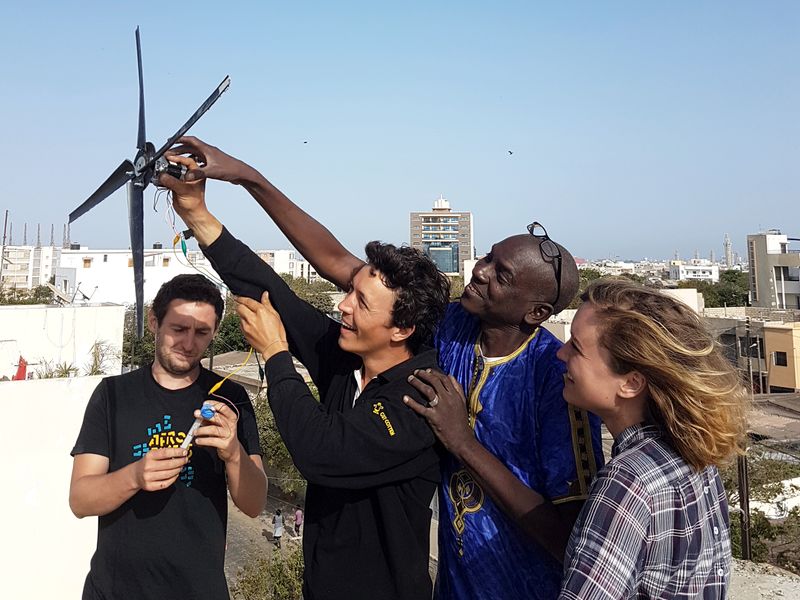
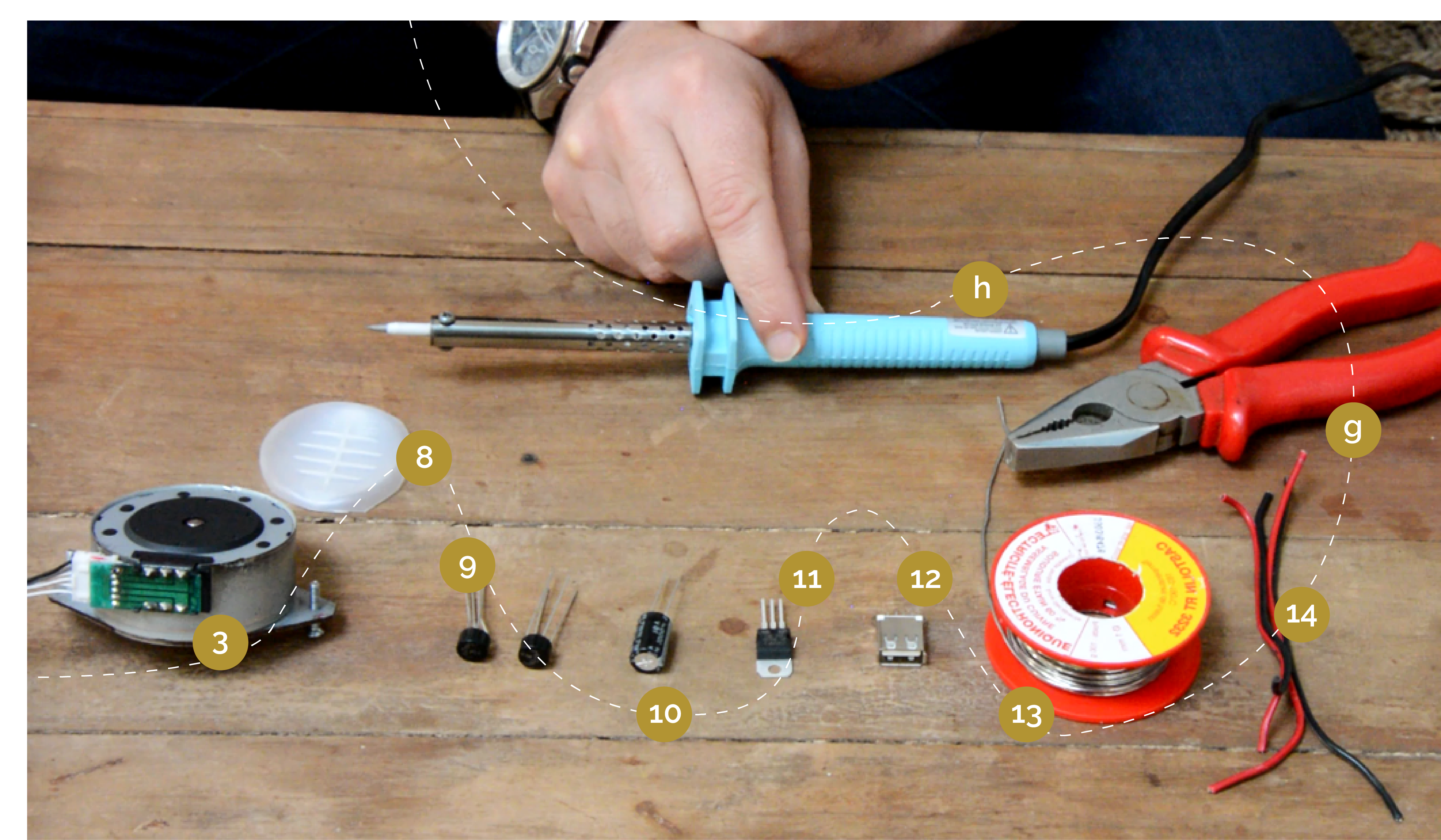
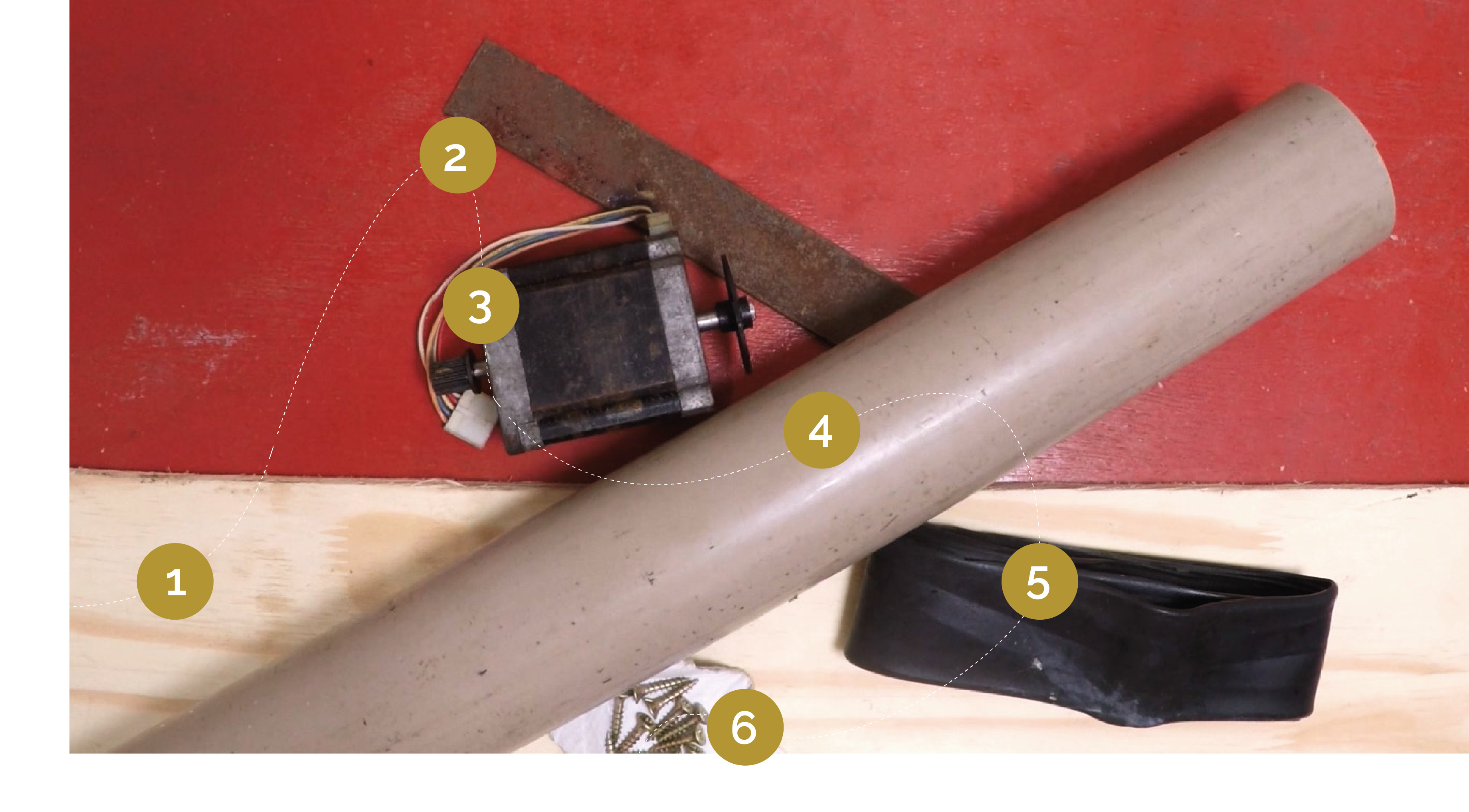
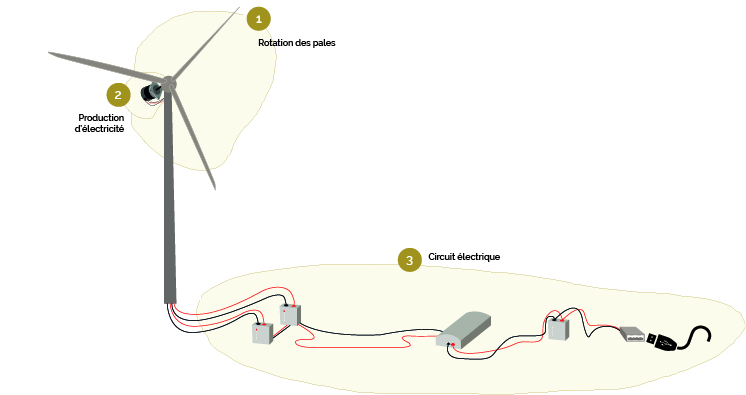
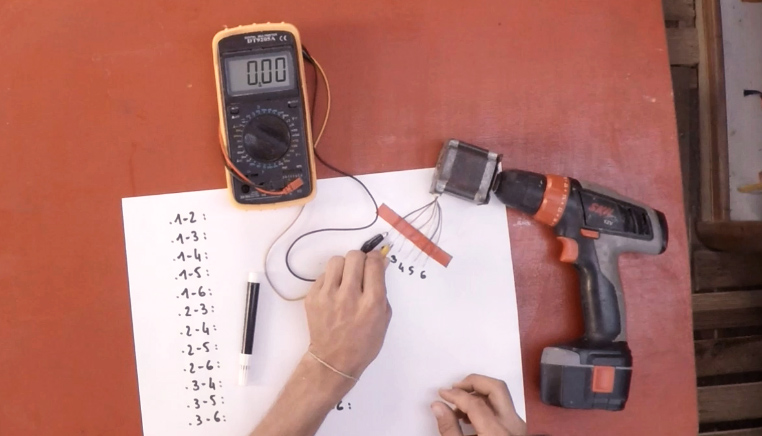
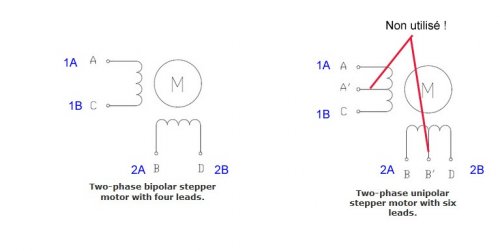
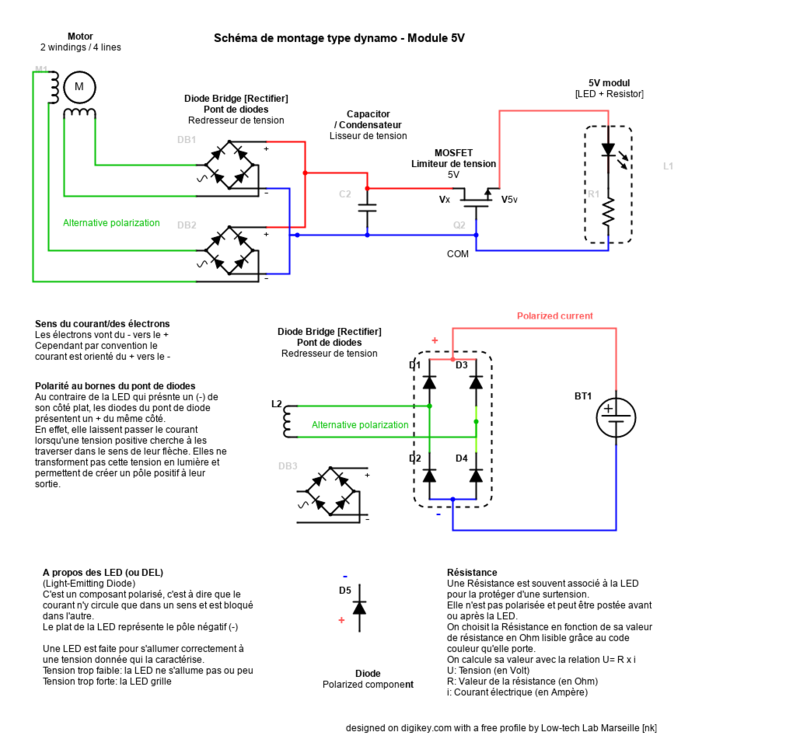
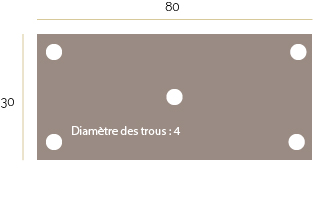
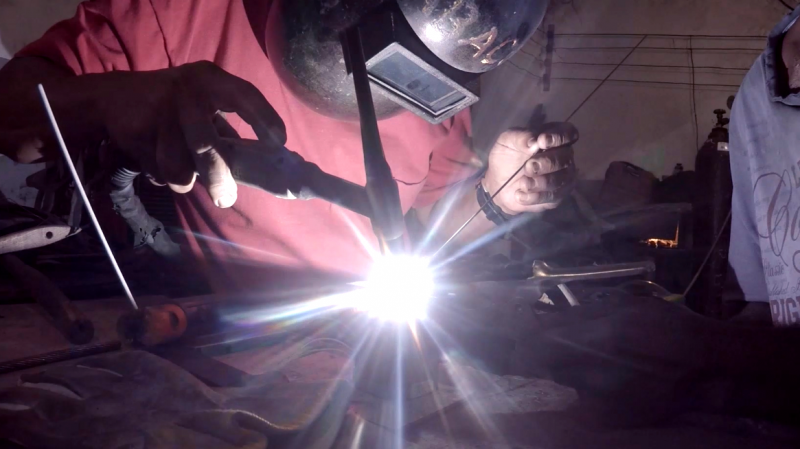
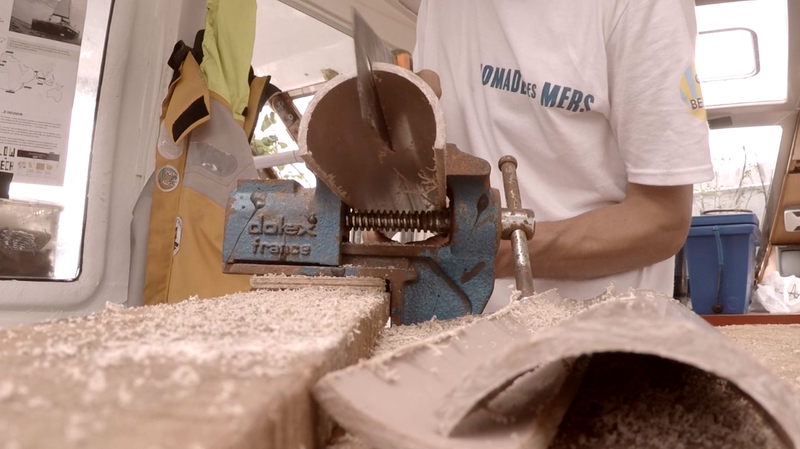
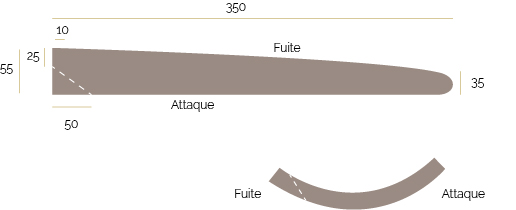
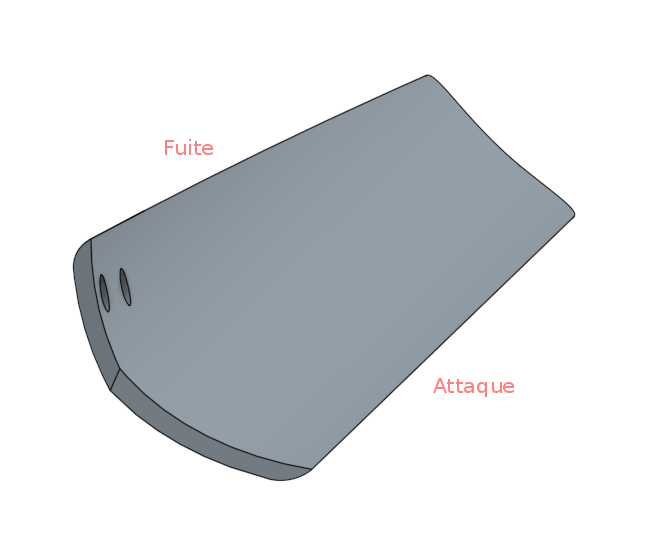
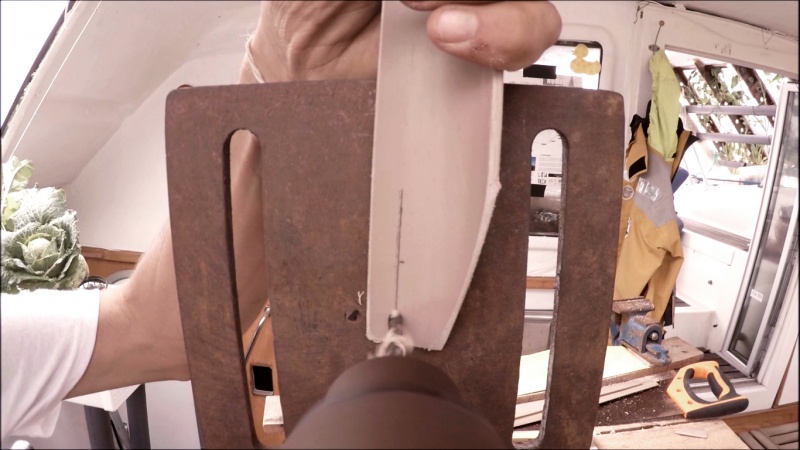
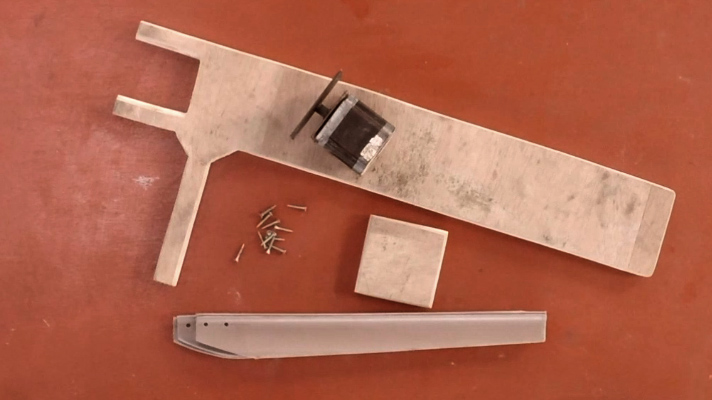
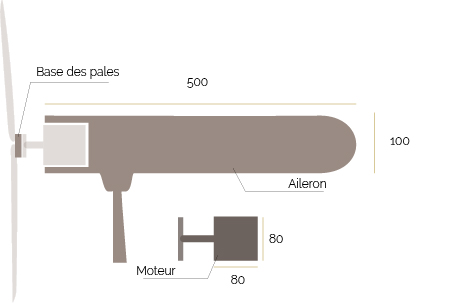
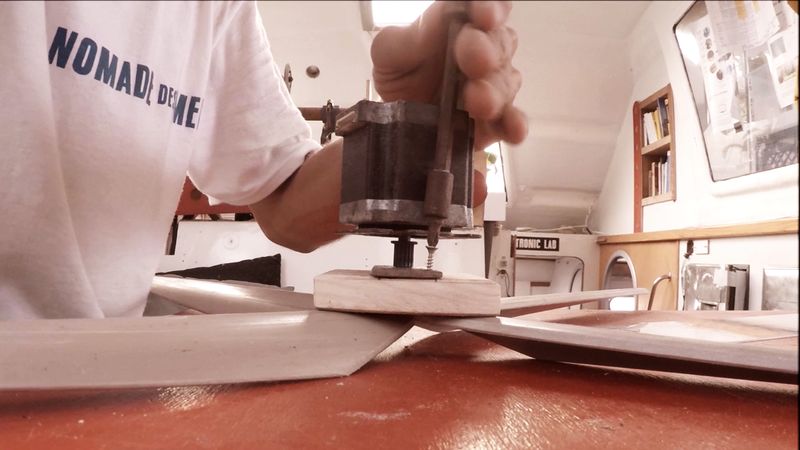
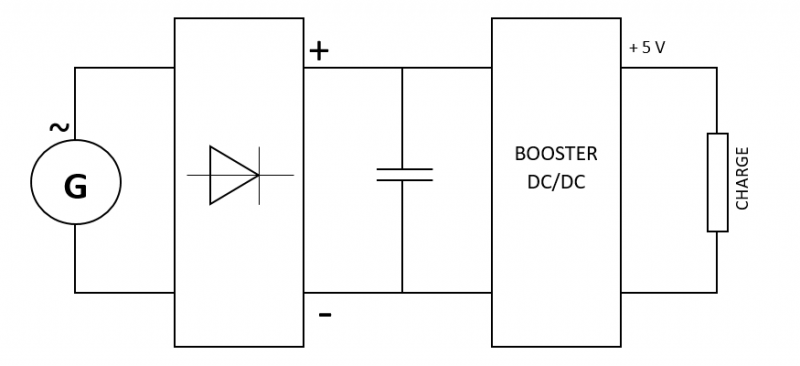

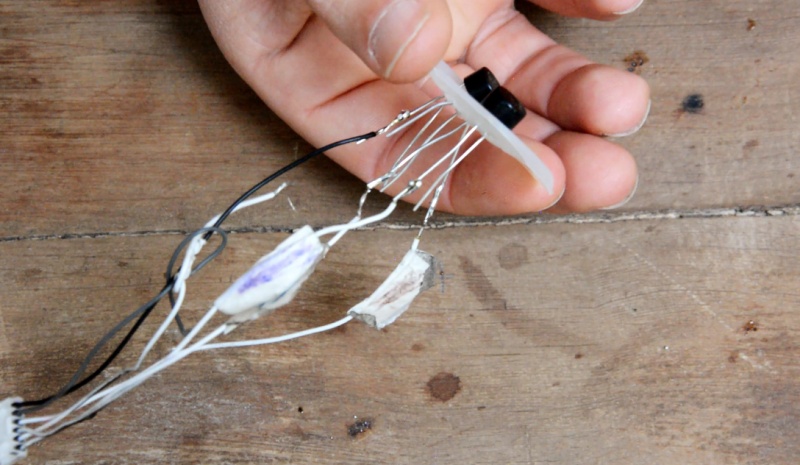
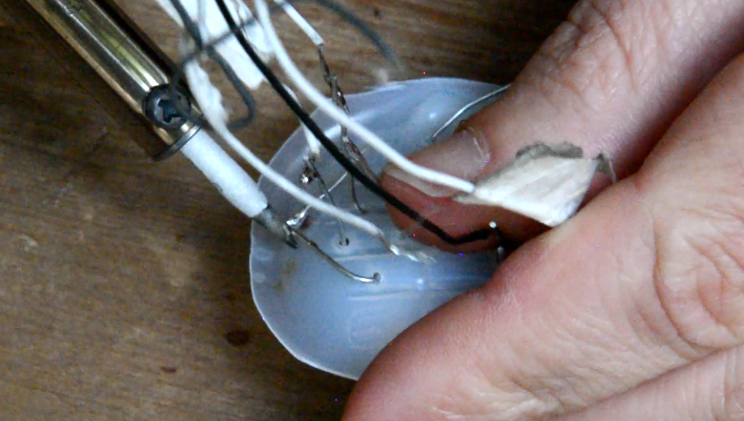
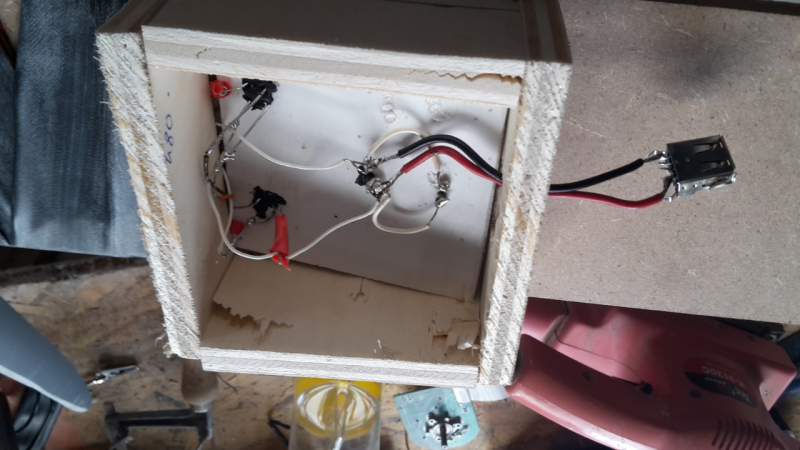
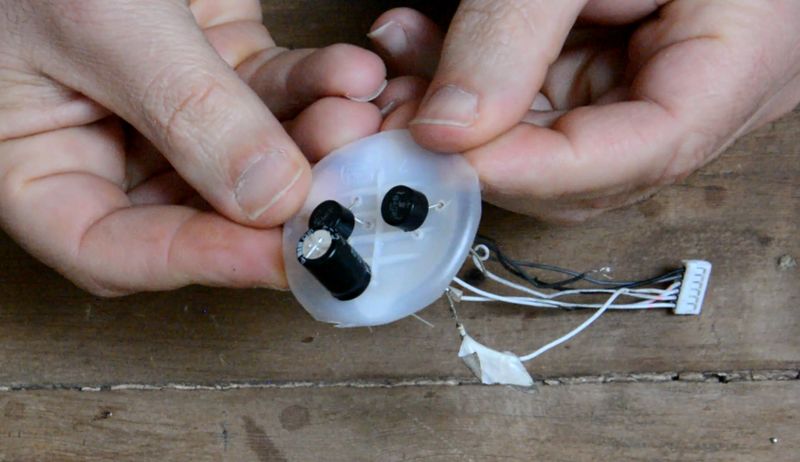
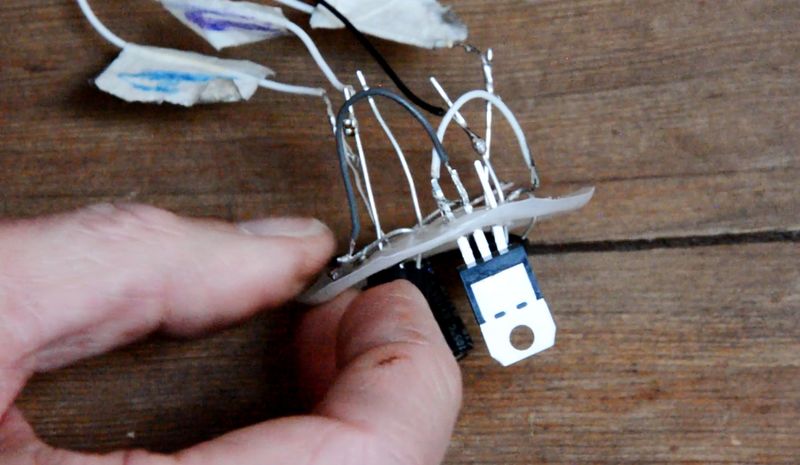
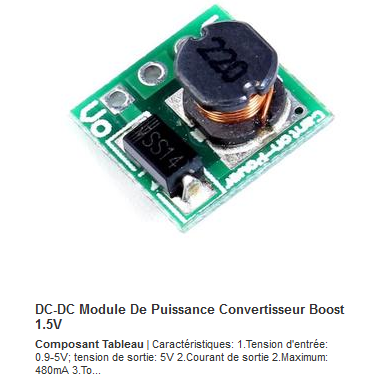
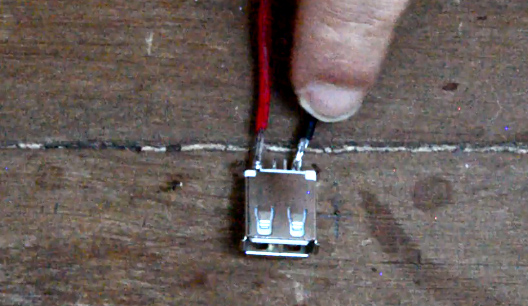
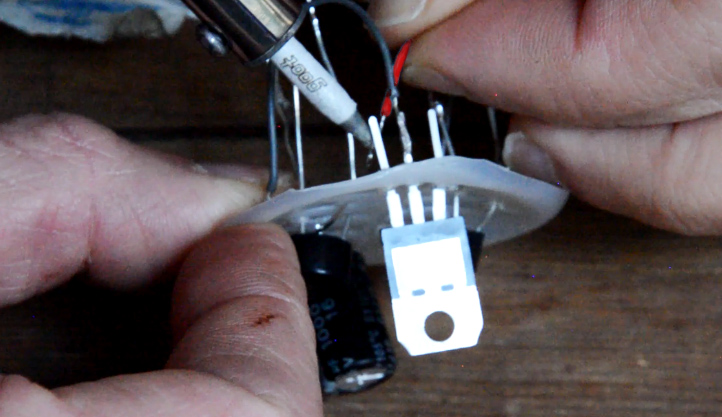
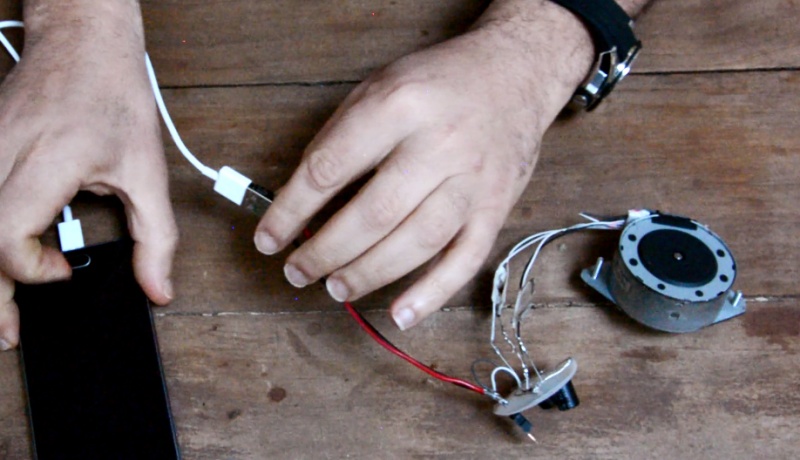
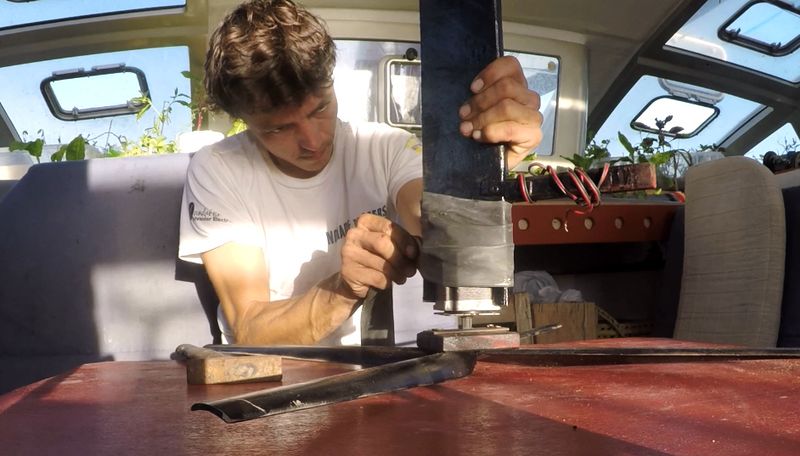
 Français
Français English
English Deutsch
Deutsch Español
Español Italiano
Italiano Português
Português